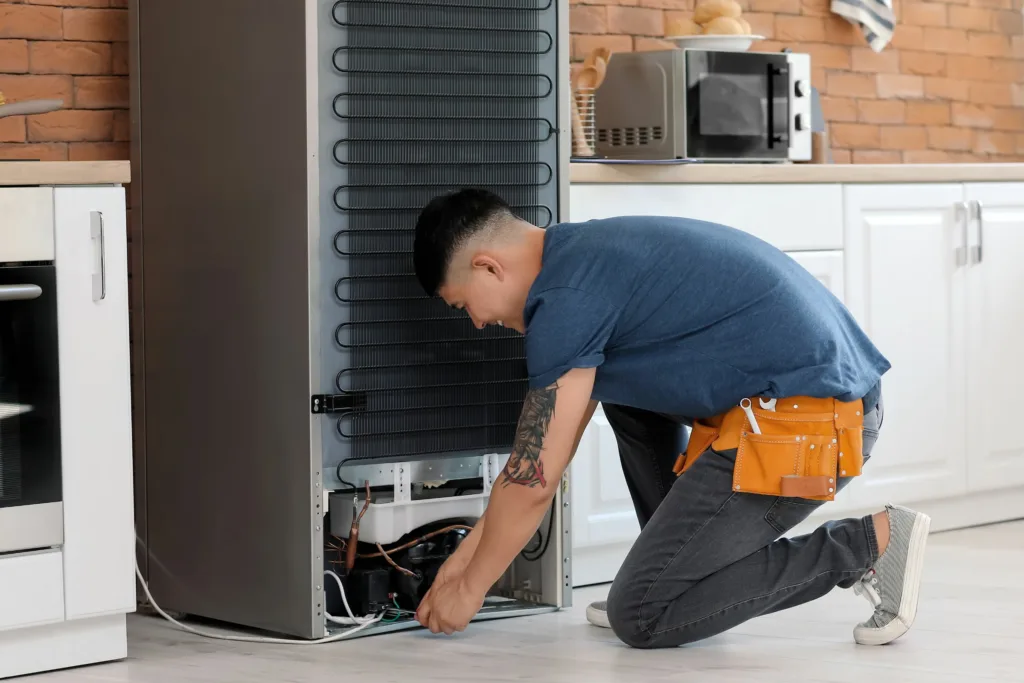
Is your Kelvinator fridge malfunctioning? Are you experiencing insufficient cooling, strange noises, or perhaps it won’t turn on at all? Don’t panic! This ultimate troubleshooting guide will walk you through diagnosing and fixing common Kelvinator refrigerator problems. We’ll cover everything from basic checks to more in-depth solutions, empowering you to get your fridge back in working order. kelvinator refrigerator not cooling? click here to book a repair
Fridge Isn't Cooling Properly
- Faulty Thermostat: Check the temperature setting inside your fridge. If it seems too warm, adjust the thermostat to a cooler setting.
- Dirty Condenser Coils: These coils are located at the back or the bottom of your fridge. Clean them with a vacuum and soft brush to improve airflow and cooling efficiency.
- Blocked Vents: Check inside the fridge and freezer for any items blocking air vents. Rearrange items to ensure proper air circulation.
- Door Seals: Inspect your door seals for gaps or damage. A worn-out gasket allows warm air in, hindering cooling. Test it by placing a piece of paper in the door and closing it. If you can pull the paper out easily, the seal needs replacement.
kelvinator fridge is nosy
- Condenser Fan Issues: Locate the condenser fan (usually near the compressor) and check for obstructions, excessive dust buildup, or damaged blades. Address these issues for quieter operation.
- Evaporator Fan Problems: The evaporator fan is inside the freezer. Check for ice buildup, which can obstruct it and cause noise. Manually defrost your freezer if necessary.
- Loose Parts: Listen closely to identify the source of the noise. Tighten any loose screws or components you find.
fridge Won't Turn On
- Power Outlet: Ensure the fridge is plugged in properly and the outlet is working. Test the outlet with a different device.
- Tripped Circuit Breaker: Check your home’s electrical panel for a tripped breaker and reset it if necessary.
- Power Cord Damage: Inspect the power cord for any fraying or cuts. Replace a damaged cord immediately.
- Faulty Start Relay/Capacitor: These components help the compressor start. If they fail, your fridge won’t turn on. You might need a technician to diagnose and replace them.
other common problems
- Frost Buildup: Ensure the freezer door closes tightly, and avoid opening it too often. If frost persists, check for faulty defrost components (timer, heater, thermostat) which may need professional repair.
- Water Leaks: Check the drain pan beneath the fridge, it may be full and overflowing. Look for damaged water lines or a clogged defrost drain, which can cause leaks.
- Fridge Runs Constantly: Frequent door openings, hot food placed inside, or a faulty door seal can make your fridge work harder. Address these habits and check your seals.
when to call our professionals
While this guide covers basic troubleshooting, some scenarios require professional assistance:
- Refrigerant Leaks: These require specialized equipment to detect and repair.
- Compressor Failure: This is a significant repair, often best handled by a technician.
- Electrical Issues: If you’re unsure about electrical components, consult a professional.
Conclusion
With this comprehensive guide, you can tackle many Kelvinator fridge problems yourself. However, remember safety first and don’t hesitate to call a professional when needed. By following these troubleshooting steps and implementing preventative care, you can ensure your Kelvinator fridge keeps your food fresh and your kitchen running smoothly.
